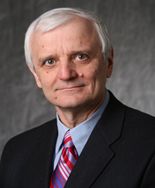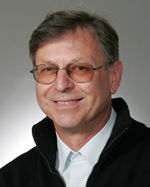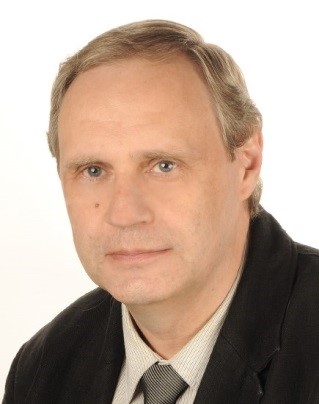ISCIS 2014 Keynote talks
Keynote I:
Failure dynamics in the World Economic Forum global risk network
Prof. Boleslaw K. Szymanski, IEEE Felow
Social and Cognitive Networks Academic Research Center,
Rensselaer Polytechnic Institute, Troy NY 12180, USA
Abstract: Risks threatening modern societies form an intricately interconnected network and it is this network that often underlies crisis situations. Yet, little is objectively known about how risk materializations in distinct domains directly or indirectly influence each other. Here we present an approach in which crowdsourced, expert assessments of risk likelihoods and risk influence on each other obtained from the World Economic Forum are utilized as a starting point to build a quantitative model of the dynamics of the global risk network. This approach enables us to analyze risks that are particularly difficult to quantify, such as geo-political or social risks. Optimal parameters for the model are obtained using historical data on risk materialization. We discovered that the averages of expert's assigned probabilities of risk materialization in ten-year period were very precise approximations of probabilities obtained by the model without network effects. This match validates our historical data on risk materialization. Yet, this model is not statistically better than the simpler model relying directly on historical data. In contrast, our dynamic model including network effects outperforms significantly the other models. Combining network dynamic modeling with crowdsourced data uncovers full value of the latter. The optimized model provides a quantitative window into the adverse effects of risk interdependency, and allows an objective characterization of the materialization of risks due to indirect effects propagating through the network. Finally, we also demonstrate the efficacy of our network model in predicting the activation of risks in a future time window.
Biography

Dr. Boleslaw K. Szymanski is the Claire and Roland Schmitt Distinguished Professor and the Director of the ARL Social and Cognitive Networks Academic Research Center at the Rensselaer Polytechnic Institute and the Rensselaer Network Science and Technology (NeST) Center. He received his Ph.D. in Computer Science from Institute of Informatics of National Academy of Science in Warsaw, Poland, in 1976. He published over 300 scientific articles, is a foreign member of the National Academy of Science in Poland and an IEEE Fellow and was a National Lecturer for the ACM. In 2009, he received the Wilkes Medal of British Computer Society. His current research interests focus on computer networks and technology-based social networks.
Breaking the gigabit barrier in modern WLANs: Advances in IEEE 802.11 technology and its applications
Prof. Jozef Wozniak, IEEE Senior Member
Chair of Computer Communications Department,
Gdansk University of Technology, Gdansk, Poland
email: jowoz@eti.pg.gda.pl
Abstract: The talk concentrates on recent advances in development of Wi-Fi technology, together with new areas of applications. Wireless solutions supporting user mobility have changed the way people work, learn, play, and communicate with each other. By increasing human productivity and work comfort they in turn create new expectations. New wireless LANs should support more types of mobile devices and applications for both home- and enterprise-grade Wi-Fi solutions.The talk addresses a wide variety of Wi-Fi technologies, showing continuous efforts to enhance them, including developments that extend the legacy solution in the frequency and time domains to reveal new possibilities. The stress is put on new standard solutions and interesting application scenarios offered by various Wi-Fi amendments.
In particular the talk presents:
- 802.11n. This standard introduces more effective procedures implemented both at PHY and MAC layers, offering, among others, bandwidth and frame aggregation and better integration of 2.4 and 5 GHz bands.
- 802.11ac. This solution widely expands the ideas of 802.11n and is intended for both home and general-purpose solutions. It ensures direct fast transfer of information between devices, offering connections with local infrastructure, and makes it possible to create numerous independent networks inside a residential area with adjusted transmission ranges, minimized delays, and maximum transmission rates.
- 802.11 ad. This technology shifts data transfer from the relatively low frequencies of 2.4 and 5 GHz to 60 GHz. This is the Wi-Fi industry response to the users’ new requirements to support gigabit rates for transmission over shorter distances. It enables new application scenarios for home/office distribution of HDVD and similar bandwidth-hungry applications.
- White Spaces Wi-Fi and 802.11af – This technology allows utilizing the property of sub-gigahertz transmission together with Wi-Fi advances. The 802.1af amendment expands the transmission range of WLANs in order to remove a coverage gap between legacy WLANs and operator-based WMAN and/or 3GPP installations.
- 802.11ah. This solution is proposed for sensor networks, industrial automatics, home control, and green/eco nets to expand coverage and maximize throughput.
- 802.11p. This standard solution offers wireless access in vehicular environments (WAVE), creating a vehicular communication system. It defines enhancements to 802.11 required to support Intelligent Transportation Systems (ITS) applications. This includes between high-speed vehicle-to-vehicle and vehicle-to-roadside infrastructure data exchange in the licensed ITS band of 5.9 GHz (5.85-5.925 GHz).
Biography

Jozef Wozniak received his Ph.D. and D.Sc. degrees in Telecommunications from Gdansk University of Technology in 1976 and 1991, respectively. He is currently a Full Professor at the Faculty of Electronics, Telecommunications and Computer Science, Gdansk University of Technology. He has worked on a number of research projects, authored of more than 200 journal and conference papers.
He has also coauthored 4 books on data communications, computer networks and communication protocols.
In the past he participated in research and teaching activities at Politecnico di Milano, Vrije Universiteit Brussel and Aalborg University, Denmark. In 2006 he was Visiting Erskine Fellow at the Canterbury University in Christchurch, New Zealand.
He has served in technical committees of numerous national and international conferences, chairing or co-chairing several of them. He is a senior member of IEEE and IFIP, being the chair of the WG6.8 (Wireless and Mobile Communications Group) IFIP TC6. His current research interests include modeling and performance evaluation of communication systems with the special interest in wireless and mobile networks.
Queuing Models for 3G and 4G Mobile Network Systems
Prof. Maciej Stasiak,
Chair of Communication and Computer Networks,
Poznań University of Technology, Poznań, Poland
email: stasiak@et.put.poznan.pl
Keynote Talk
Abstract:The analysis of modern networks, 3G and 4G mobile networks supporting multi-service traffic in particular, requires the development of appropriate analytical models of network systems to which appropriate traffic control mechanisms are to be introduced. One of the most important problems faced by engineers is the need to develop simple and effective queuing models for multi-service traffic. Hitherto, no satisfactory solutions have been proposed that would make the evaluation of the queues parameters possible for different classes of calls with differentiated QoS requirements. As of today, only results for borderline cases have been obtained. These results, however, are of low accuracy and cannot provide the basis for engineering methods and algorithms. In traffic theory, the problem is formulated as the “Erlang formula for the Internet”, and it is addressed adequately by researchers and engineers alike.
In the Chair of Communications and Computer Networks at the Poznan University of Technology, models of multi-service queuing systems that enable the researcher to determine the values of the average lengths of queues and waiting times for individual classes of calls have been developed. In these models, the number of resources serviced in a given occupancy state depends on the distribution of this state among particular classes of calls, i.e. on the number of calls of particular classes in the system. Therefore, the bitrate for a selected class of calls allocated in the server changes along with the change in the state of the system, i.e. with the number of streams of particular classes. To the best knowledge of the authors, the proposed models are, in fact, the first solution to the problem of multi-service queuing systems modelling. These models can also constitute the basis of 3G and 4G systems analysis that takes into account different scenarios for queue service in the interfaces of mobile networks.
Biography

Maciej Stasiak received M.Sc. and Ph.D. degrees in electrical engineering from the Institute of Communications Engineering, Moscow, Russia, in 1979 and 1984, respectively. In 1996 he received D.Sc. degree from Poznan University of Technology in electrical engineering. In 2006 he was nominated as full professor. Between 1983-1992 he worked in Polish industry as a designer of electronic and microprocessor systems. In 1992, he joined Poznan University of Technology, where he is currently Head of the Chair of Communications and Computer Networks at the Faculty of Electronics and Telecommunications.
He is the author or co-author of more than 250 scientific papers and five books. He is engaged in research and teaching in the area of performance analysis and modelling of multiservice networks and switching systems, in particular, resource allocation, call admission control, quality of service, multi-rate systems and queuing systems. Since 2004, he has been actively carrying out research on modeling and dimensioning cellular 2/3/4G networks.

